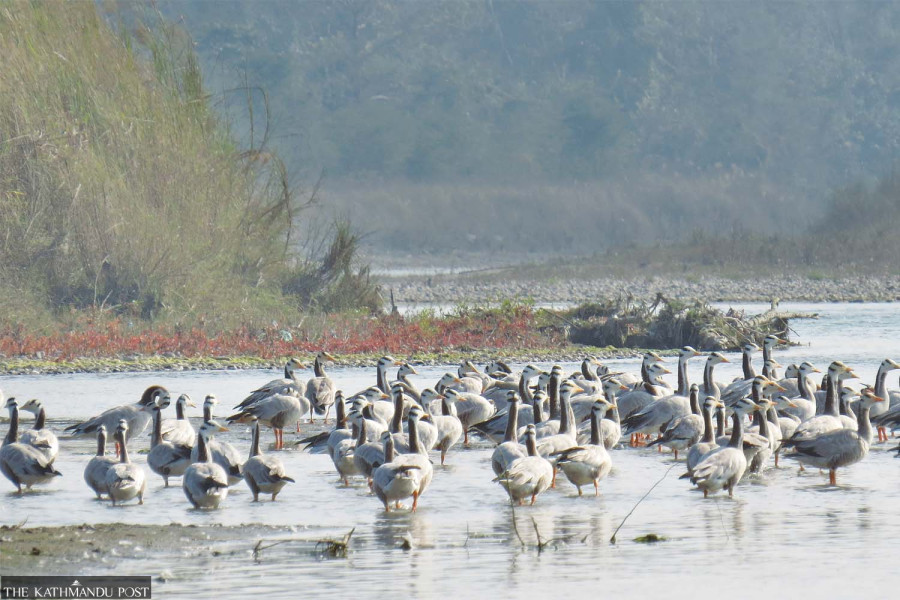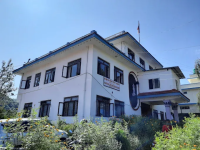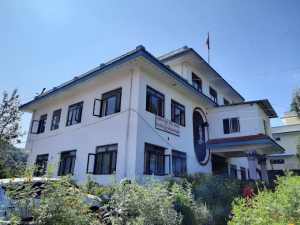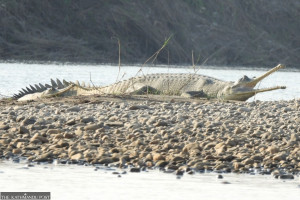Bagmati Province
Number of migratory aquatic birds decreasing in Chitwan
Conservationists attribute the decline to increasing pollution levels, human encroachment and shrinking water bodies.
Ramesh Kumar Paudel
The number of migratory birds is on the decline, according to a bird count conducted by conservationists last week.
The count was conducted in various rivers, streams, lakes and wetland areas.
According to conservationists, the arrival of almost all the winter migratory birds except Ruddy shelducks has gradually declined over the years. “Last year, we found a total of 54 species of aquatic birds. This year the number of bird species has come down to 49,” said Tika Giri, chairman of Bird Education Society in Sauraha who has been involved in bird counting since 1987.
The number of Ruddy shelducks has slightly increased in Chitwan this year; however, the number of other bird species has decreased, said Giri.
The number of Bar-headed geese arriving in Chitwan from the north flying over the Himalayas has also decreased.
“We recovered more than 200 Bar-headed geese last year in Chitwan. But only 75 birds of this species were found this year,” Giri told the Post.
Ornithologists, conservationists and technicians have conducted a count of aquatic birds every year in Nepal since 1987.
The fresh bird count was conducted in Chitwan on January 8 and 9. A team of 50 conservationists and volunteers were mobilised to count water birds in the Rapti and Narayani rivers, Tamor lake, Bisahajari lake, Lami lake, Barandabhar forest area and other wetland areas in Chitwan.
The decline in the number of migratory aquatic birds in Chitwan is a cause for concern, Giri said, adding increasing pollution levels, human encroachment and shrinking water bodies have contributed to the decrease in the number of water birds in recent years.
“Several lakes and wetland areas are shrinking and drying up,” Giri added. “Meanwhile, human encroachment on the habitats of birds has increased. As a result, the species and number of water birds have started decreasing.”
While earlier, flocks of common cranes could be found in the Dibyanagar area and the river banks of the Narayani river in western Chitwan, of late the number is gradually decreasing, Giri said. “We recorded a total of 178 common cranes in Chitwan last year. This year there were only 17 of them,” said Giri, informing that the common cranes fly all the way to Nepal from Mongolia.
The common cranes live in flocks near rivers. They search for food in the surrounding paddy fields. “The paddy fields are also gradually shrinking. People have stopped planting paddy and some have even built houses and other physical structures in the paddy fields,” said Tek Bahadur Gurung who has been involved in bird counting for the past decade. “Migratory birds do not find food easily. That is one of the reasons why the number of migratory aquatic birds visiting Nepal is decreasing.”
“Around 20-25 Demoiselle cranes used to come to the Rapti river in Sauraha a few years ago. They aren’t seen in the area anymore,” said Gurung.
Many tourists, mainly foreigners, visit Chitwan National Park, the country’s first national park, for birding. “Shrinking habitats and shortage of food are the major challenges of bird conservation in Chitwan,” said Basu Bidari, another ornithologist. “Everyone should work together to conserve birds and promote tourism in Chitwan.”




 5.4°C Kathmandu
5.4°C Kathmandu1.jpg)











%20(1).jpg&w=300&height=200)

